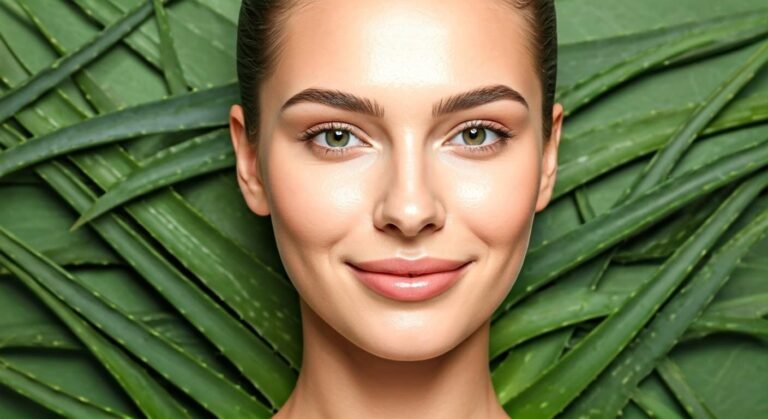Dealing with oily, acne-prone skin can feel like an endless battle. One day your skin seems to be clearing up, and the next, you’re facing a new breakout. I’ve been there, and I know how frustrating it can be! The good news is that with the right skincare routine and products, you can effectively manage oily acne-prone skin and achieve the clear, healthy complexion you’ve been dreaming of. Let’s explore some game-changing tips that dermatologists and skincare experts swear by to help you tame excess oil and banish those stubborn breakouts for good.
Understanding Oily Acne-Prone Skin
Before diving into solutions, it’s important to understand what’s happening with your skin. Oily skin occurs when your sebaceous glands produce too much sebum (natural oil). While some oil is necessary to keep your skin hydrated and protected, excessive oil can mix with dead skin cells and bacteria, clogging pores and leading to acne.
Several factors contribute to oily, acne-prone skin:
Daily Cleansing: The Foundation of Healthy Skin
For those of us with oily, acne-prone skin, proper cleansing is non-negotiable. But here’s the thing – overwashing can actually make your skin produce more oil! Counterintuitive, right?
Morning and Evening Cleansing Ritual
Wash your face twice daily with a gentle, pH-balanced cleanser. Look for ingredients like salicylic acid, glycolic acid, or benzoyl peroxide, which help to dissolve excess oil and unclog pores. Remember, harsh soaps will strip your skin of its natural oils, triggering your sebaceous glands to produce even more oil as compensation. Nobody wants that!
The Double-Cleanse Method
Ever heard of double cleansing? It’s a game-changer for oily skin types! Start with an oil-based cleanser (I know, it sounds crazy to put more oil on oily skin, but trust me). Oil cleansers actually dissolve oil-based impurities like sebum, sunscreen, and makeup. Follow up with a water-based cleanser to remove water-based impurities like sweat and dirt.
Exfoliation: Out With the Old, In With the New
Exfoliation is crucial for oily skin types because it helps to remove dead skin cells that can mix with sebum and clog pores. However, there’s a fine line between helpful exfoliation and irritating your skin.
Chemical vs. Physical Exfoliation
Chemical exfoliants containing AHAs (like glycolic acid) or BHAs (like salicylic acid) are often more effective and gentler than physical scrubs. They work by dissolving the bonds between dead skin cells, allowing them to be easily washed away. Limit exfoliation to 2-3 times a week – any more than that can irritate your skin and potentially worsen acne.
Hydration: Yes, Oily Skin Needs Moisture Too!
One of the biggest myths about oily skin is that it doesn’t need moisturizer. In reality, skipping moisturizer can signal your skin to produce more oil to compensate for perceived dryness.
Lightweight, Non-Comedogenic Formulations
Choose oil-free, water-based, or gel moisturizers that won’t clog your pores. Look for terms like “non-comedogenic” and “oil-free” on the label. Ingredients like hyaluronic acid, niacinamide, and glycerin provide hydration without adding oiliness.
Sun Protection: Non-Negotiable for All Skin Types
Yes, even oily skin needs sunscreen! UV exposure can worsen acne scars and trigger inflammation. Plus, many acne treatments increase sun sensitivity.
Look for lightweight, oil-free, broad-spectrum sunscreens with an SPF of at least 30. Mineral sunscreens with zinc oxide can have the added benefit of being slightly mattifying and even providing some anti-inflammatory benefits for acne-prone skin.
Targeted Treatments: The Heavy Hitters
When it comes to treating acne, certain ingredients have proven their worth time and again:
Salicylic Acid
This beta-hydroxy acid (BHA) is oil-soluble, allowing it to penetrate deep into pores to dissolve excess sebum and clear out dead skin cells. It’s perfect for those pesky blackheads and whiteheads.
Benzoyl Peroxide
Benzoyl peroxide kills acne-causing bacteria and helps remove excess oil and dead skin cells. Start with a lower concentration (2.5%) to minimize irritation.
Niacinamide
This form of vitamin B3 regulates oil production, reduces inflammation, and strengthens the skin barrier. It’s gentle enough for daily use and plays well with other actives.
Retinoids
Derivatives of vitamin A, retinoids increase cell turnover, prevent clogged pores, and reduce inflammation. They can be irritating at first, so start slowly – perhaps once or twice a week – and build up frequency as your skin adjusts.
Lifestyle Factors That Affect Skin Health
Skincare products aren’t the only factors in achieving clear skin. These lifestyle habits can make a significant difference:
Common Mistakes to Avoid
Even with the best intentions, many of us make skincare mistakes that can worsen oily, acne-prone skin:
When to See a Dermatologist
While many cases of acne can be managed with over-the-counter products and good skincare habits, sometimes you need professional help. Consider seeing a dermatologist if:
A dermatologist can prescribe stronger treatments like prescription retinoids, antibiotics, hormonal therapies, or procedures like chemical peels and laser treatments.
Conclusion
Managing oily acne-prone skin requires consistency, patience, and the right combination of products for your unique skin. Remember that what works for others might not work for you, so don’t be afraid to experiment (cautiously!) to find your perfect routine. The journey to clear skin isn’t always linear, but with these evidence-based tips and a bit of perseverance, you can effectively control excess oil and breakouts while maintaining your skin’s natural balance and health. Your skin’s needs may also change with seasons, stress levels, and age, so be prepared to adapt your routine accordingly. With time and the right approach, you’ll be well on your way to healthier, clearer skin that’s free from excess oil and acne.







